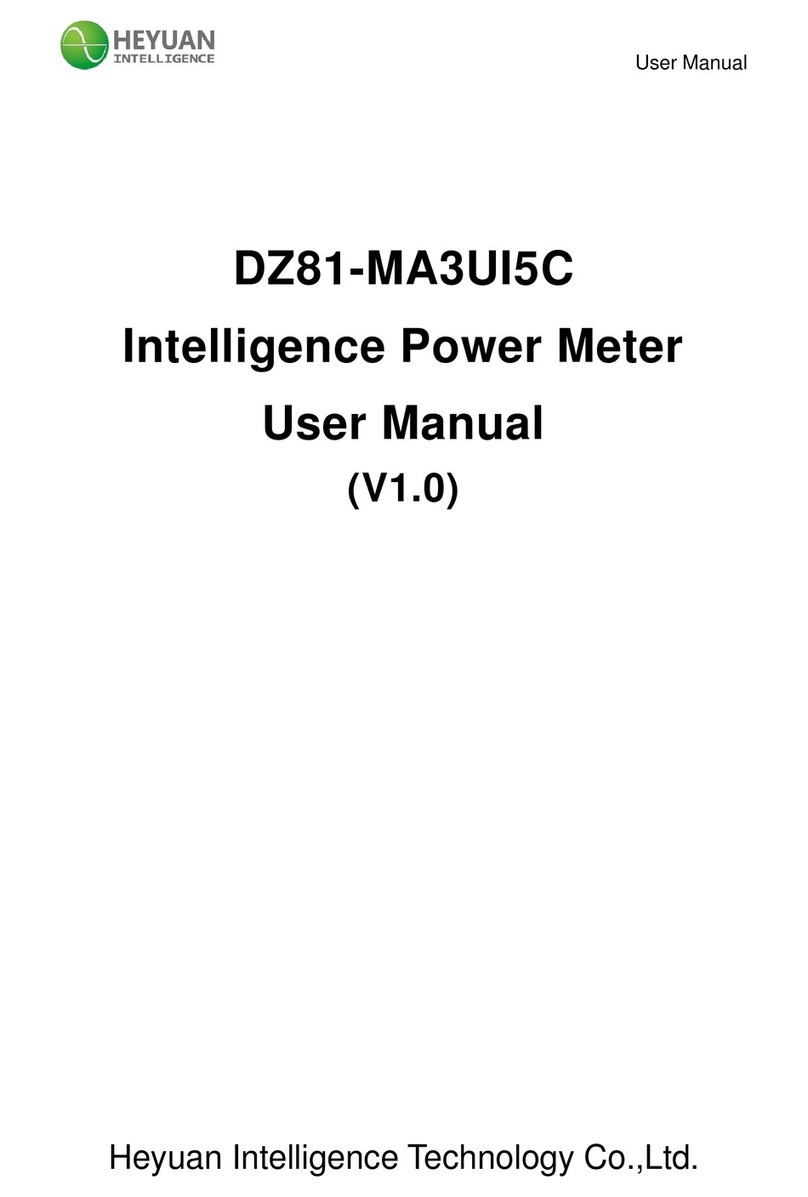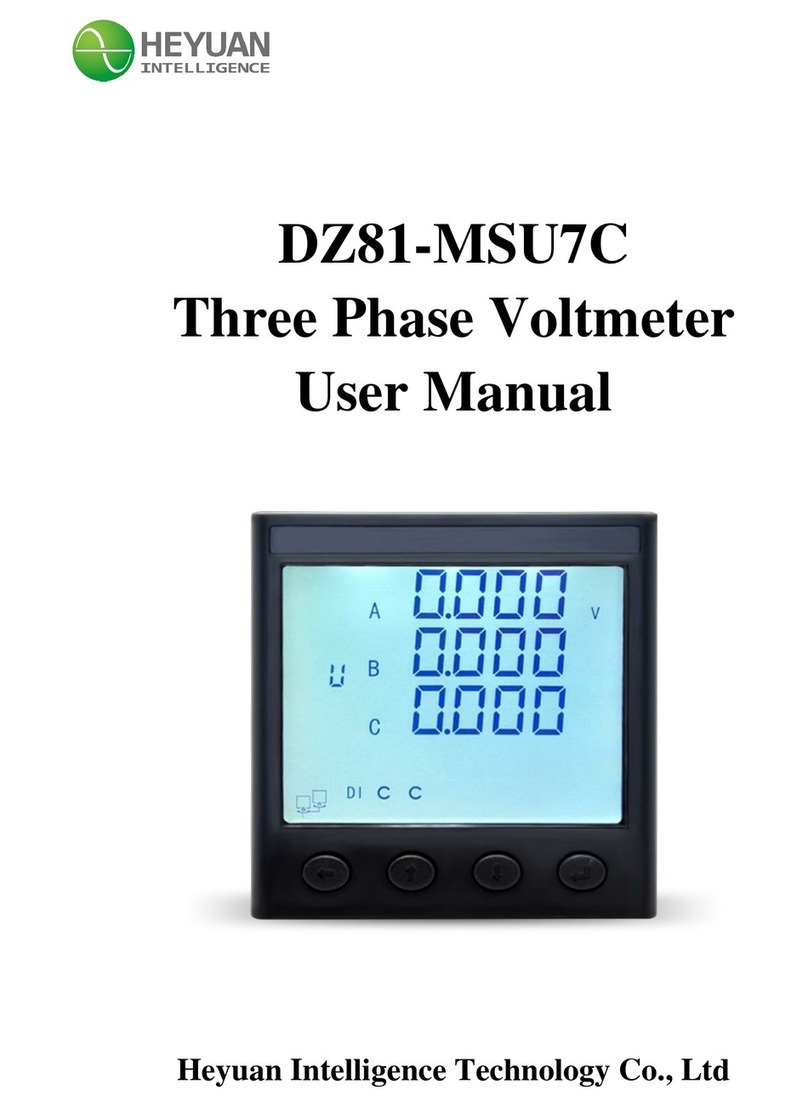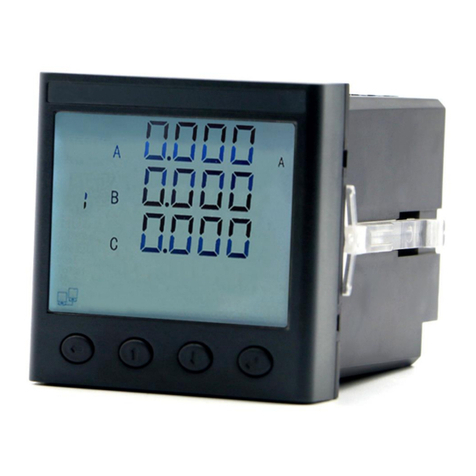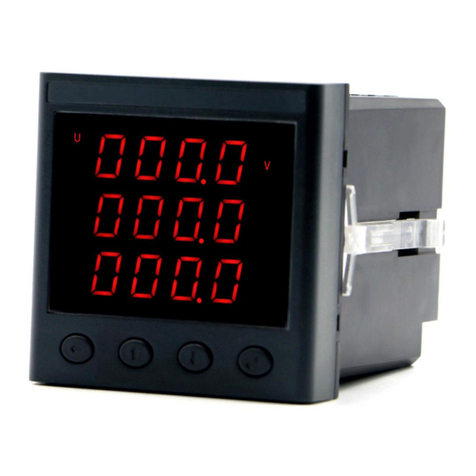Contents
Chapter 1 Meter Overview …………………………………………………………………………….......1
1.1 Overview…………………………………………………....................................................1
1.2 Main Functions…………………………………………………...........................................1
Chapter 2 Specifications ………………………………………………………………………………….2
2.1 Input Voltage ………………………………………………….............................................2
2.2 Input Current …………………………………………….................................. .................2
2.3 Frequency Measurement …………………………………………………..........................2
2.4 Measuring Accuracy ……………………………………....................................................2
2. 5 Communication……………………………………...........................................................2
2.6 Power Supply…………………………………….............................................. ................2
2. 7 Working Condition…………………………………….......................................................2
2.8 Pulse Constant……………………………………............................................................2
Chapter 3 Dimension and Installation ……………………………………………………………….…2
3.1 Dimension …………………………….……………...........................................................2
3.2 Installation Method ……………………………………………….................. .....................3
Chapter 4 Typical Wiring ………………………………………………………………………….………3
4.1 3-phase 4-wire Wiring Mode (3LN, 3CT)........................................................................3
4.2 3-Phase 3-Line Open Delta Mode (2LL, 2CT) ...............................................................4
4.3 Power Supply.................................................................................................................4
4.4 Communication Interface...............................................................................................5
4.5 Energy Pulse Output .....................................................................................................5
4.6 Digital Input ....................................................................................................................5
4.7 Other Wiring Mode ........................................................................................................6
Chapter 5 Meter Display and Operation ........................................................................................6
5.1 Phase Voltage, Line Voltage and Current Display Interfaces ........................................6
5.2 Energy Display Interfaces ..............................................................................................6
5.3 Power Display Interfaces ...............................................................................................7
5.4 THD (Total Harmonic Distortion) Display Interfaces .......................................................7
5.5 Multi-tariff Display Interface ....................................................... ...................................8
Chapter 6 Parameter Setting Interface ...........................................................................................9
6.1 System Parameter Setting .............................................................................................9
6.2 Password Inquiry Interface ..........................................................................................10
6.3 Back-light Time Setting Interface.............. ............... ...................................................10
6.4 Meter ID Setting ...........................................................................................................10
6.5 Communication Parameter Setting Interface ...............................................................11
6.6 Voltage Wiring Mode Setting Interface ........................................................................11
6.7 Current Wiring Mode Setting Interface .........................................................................11
6.8 PT Ratio Setting Interface .......................................................................................... 12
6.9 CT Ratio Setting Interface ...........................................................................................12
Chapter 7 After-sales Service .......................................................................................................13
Chapter 8 Contact Us ....................................................................................................................13


































